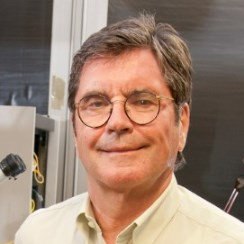Metamaterials, Quantum and Nanophotonics in the Third Millennium
A special issue of Applied Sciences (ISSN 2076-3417). This special issue belongs to the section "Optics and Lasers".
Deadline for manuscript submissions: 20 September 2024 | Viewed by 2153
Special Issue Editors
Interests: computer security; computer networking; Internet of Things; quality of service provision assessment
2. Technische Universität Berlin, Center of NanoPhotonics Hardenbergstr. 36, 10623 Berlin, Germany
Interests: ultra-high bit rate VCSELs based on QWs and QDs; energy efficiency; integration with CMOS drivers and nanophotonic structures; high-brilliance edge emitters; q-bit emitters; quantum dot lasers, passive- and active-mode-locked lasers; quantum dot amplifiers (QD amplifiers)
Special Issues, Collections and Topics in MDPI journals
Special Issue Information
Dear Colleagues,
This Special Issue comprises some of the most important contributions presented at NANOPHOTONICS2022, the world’s leading conference on nanophotonics and metamaterials. In addition this Issue is open to a restricted number of leading scientists in these rapidly advancing areas to present their latest results.
The Special Issue presents the most important selected papers discussing current research trends in the fields of nanophotonics and metamaterials, such as topological effects in optics, two-dimensional materials, light–matter interaction in nanocavities, plasmonic circuits, thermal engineering, and quantum photonic systems.
Thus, this Special Issue provides insights into current research trends and future research directions and addresses current and future applications and challenges.
Prof. Dr. Eduard Babulak
Prof. Dr. Dieter Bimberg
Guest Editors
Manuscript Submission Information
Manuscripts should be submitted online at www.mdpi.com by registering and logging in to this website. Once you are registered, click here to go to the submission form. Manuscripts can be submitted until the deadline. All submissions that pass pre-check are peer-reviewed. Accepted papers will be published continuously in the journal (as soon as accepted) and will be listed together on the special issue website. Research articles, review articles as well as short communications are invited. For planned papers, a title and short abstract (about 100 words) can be sent to the Editorial Office for announcement on this website.
Submitted manuscripts should not have been published previously, nor be under consideration for publication elsewhere (except conference proceedings papers). All manuscripts are thoroughly refereed through a single-blind peer-review process. A guide for authors and other relevant information for submission of manuscripts is available on the Instructions for Authors page. Applied Sciences is an international peer-reviewed open access semimonthly journal published by MDPI.
Please visit the Instructions for Authors page before submitting a manuscript. The Article Processing Charge (APC) for publication in this open access journal is 2400 CHF (Swiss Francs). Submitted papers should be well formatted and use good English. Authors may use MDPI's English editing service prior to publication or during author revisions.
Keywords
- single quantum dots and q-bit emitters
- entangled photons
- Si photonic quantum computing
- quantum dot photonic devices
- mode-locked and directly modulated quantum dot lasers
- qunatum dot VCSELs and nanolasers
- topological effects in optics
- two-dimensional materials
- light–matter interaction in nanocavities
- plasmonic circuits
- thermal engineering
- and quantum photonic systems






